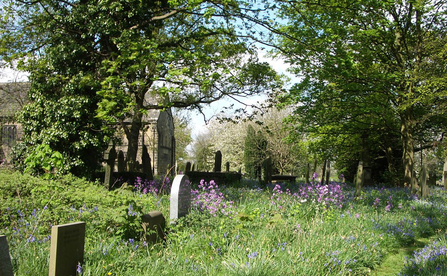
Cherishing Churchyards

Churchyards can be oases for wildlife in a wider landscape that has seen many changes. They are often rare remnants of lost grassland habitat and have many intrinsic qualities that benefit wildlife. The varying lengths of grass, headstones, pathways, mature trees and shrubs, as well as the outside of the church building itself all provide vital habitat for nesting, breeding, feeding and refuge for a wide range of species.
Tracey said: "Suffolk Wildlife Trust has worked with churches in many of the parishes across Suffolk and it is clear that, increasingly, people are starting to see their local churchyard in a different way, recognising its value as a green resource for the community and wildlife, without detracting from its original purpose and as a place of quiet reflection and contemplation. Many parishes are embracing the practice and making a few simple changes to the management of their churchyard, such as cutting some areas of grass less frequently to allow wildflowers to thrive or allowing some areas of scrub to develop to benefit birds and insects."
For more information about managing your local churchyard with wildlife in mind please contact Suffolk Wildlife Trust on 01473 890089. The advice directory on the Trust’s website is also a good place to start and has a dedicated churchyard and community wildlife section.
